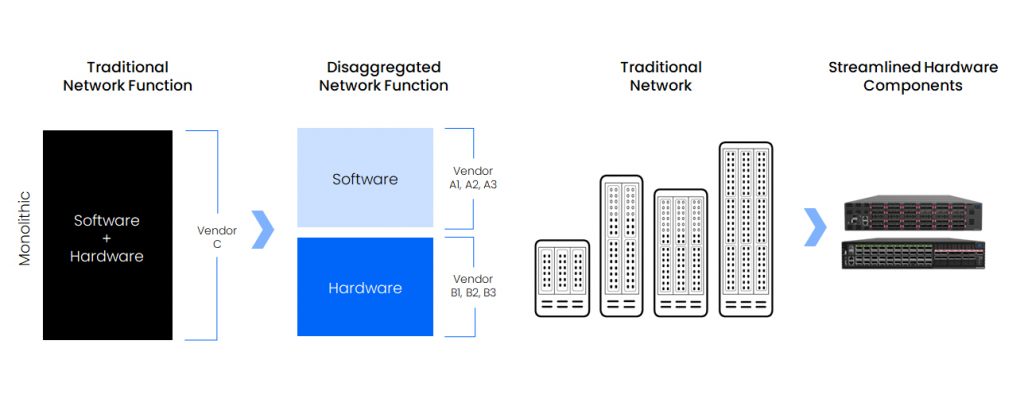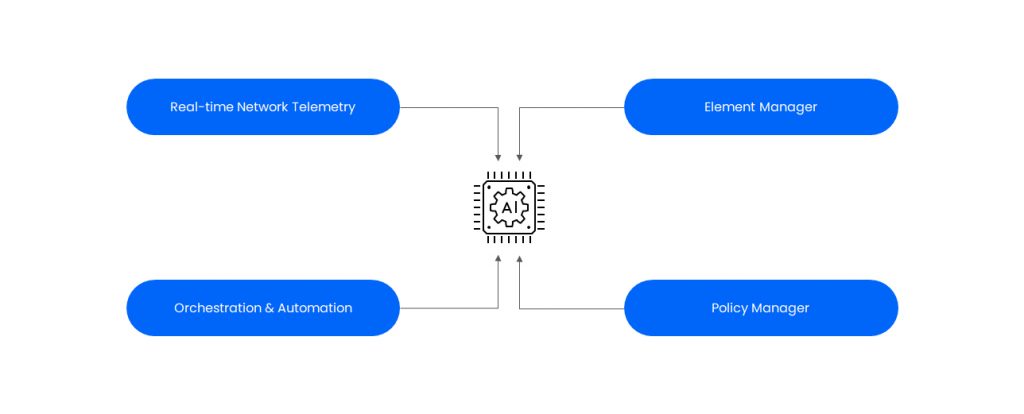|
Getting your Trinity Audio player ready...
|
It’s strange to feel the ground shaking, but this shake is a positive evolution. The more I used generative AI the more I realized its transformative potential. Much like synthesizers, which didn’t replace musicians but rather enhanced their capabilities, AI has the power to augment our skills as content creators and product translators. AI also can create new opportunities – all we need to do is to change and leverage the new era.
Cable multiple-system operators (MSOs) have been feeling the ground shaking for a while now. Like other service providers, they are watching hyperscalers vacuum up their margins, thanks to their ability to adapt rapidly. These hyperscalers quickly realized that a software-centric approach – where hardware and computing resources are virtualized – is crucial for genuine flexibility. On the flip side, cable companies are notably slower when it comes to innovation, particularly in the networking domain.
Despite significant advancements such as digital transformation, cloud computing, ‘X-as-a-service’ models, and now AI, little has changed in networking for over 25 years. While some service providers are advocating for innovation, others remain rooted in traditional methods and have been slow to adopt a software-centric networking approach. Those who haven’t adapted should note that advancement comes through change – just look at hyperscalers who change often.
The GPT moment and its Impact on networking
AI is a buzzword that changes everything. Since that “GPT moment,” almost all major hyperscalers, service providers, and other prominent companies have changed their strategy to include AI. Capital investments also are now revolving around AI, as evidenced by the changing structure of the S&P 500 index, where seven AI-related companies now account for 35% of the index.
Buzzword or not, AI is a genuine revolution for networking, as it can mitigate one of the most challenging problems of networking – operations.
All cable MSOs know the burden of operating a complex and inflexible large-scale network infrastructure with dozens of different routing boxes across different domains. Operating such a diverse network with multiple hardware types and generations that require different management skills, software stack updates, and spare parts is challenging. AI models have the potential to significantly reduce these operational efforts by automating tasks, improving performance, predicting and preventing outages, and providing insights into network usage.
The only question is who will be able to leverage these AI-empowered benefits?
Software-centric network infrastructure for MSOs
A year ago, most cable companies believed they needed an elastic network to support the dynamic demands of their business customers and reduce costs. Today, these providers are also exploring how to use AI to reduce the operational toll of managing their large-scale networks.
The solution to both challenges is one and the same – build a simpler MSO network based on a cloud-like architecture. Traditional monolithic solutions are unable to deliver the necessary software agility to utilize emerging AI technologies and fail to deliver the required scalability and cost reductions.
The transition to a cloud-like architecture involves separating hardware from software, streamlining hardware components, and centralizing software to act as a comprehensive orchestrator of the virtualized hardware resources.

Disaggregation and simplification
When executed properly, the result is a distributed software-centric infrastructure. This gives cable providers independent software and hardware development cycles that enable the agility needed to meet diverse customer demands faster. Moreover, centralized software features make it easier to leverage network visibility to feed any new AI models even in a multi-vendor environment. These models, in turn, can leverage the centralized network management to automate processes based on generated insights.
 Leverage visibility into network traffic and performance to feed new AI models
Leverage visibility into network traffic and performance to feed new AI models
Cable providers accelerate adoption of distributed software-centric network infrastructure
AI is now a key development, and we may see cable providers accelerating their adoption of a distributed software-centric infrastructure thanks to AI. The blueprint for this transformation should mirror the hyperscalers’ approach, as they excel at frequent technology adaptation. Other service providers who have embraced this culture of change are already reaping the benefits of their forward-thinking decisions.
DriveNets Network Cloud has a proven track record of facilitating this transformation, leading to a more open, flexible, and sustainable network architecture. DriveNets Network Cloud not only addresses both the desired elasticity and cost challenges, but also lays the foundation for an infrastructure optimized for AI-driven operational improvements.
Join us at SCTE Cable-Tec Expo 23, booth 852, and discover how DriveNets delivers network solutions and discover how to build your hub like the cloud.
Download White Paper
Introducing DriveNets Network Cloud




